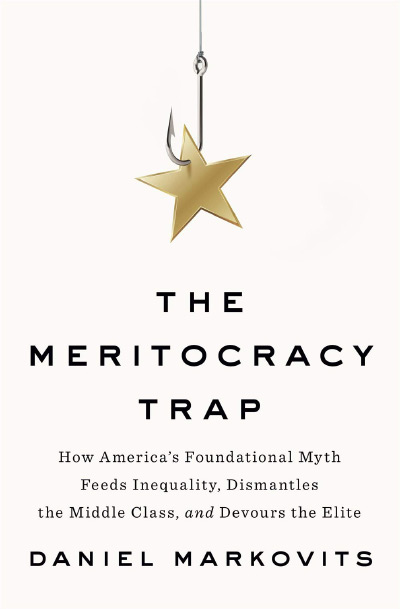In Questioning the Entrepreneurial State, editors Karl Wennberg and Christian Sandström, refute arguments about state-led innovation with the help of 18 unique contributions from innovation, public policy, economics, and strategy and management scholars.
Arguments for state-led development sound convincing. State-led innovations and responses to grand challenges like the Manhattan Project, the Apollo mission, and defense spending on the internet can initiate or lead to substantial private and public benefits. Private actors, entrepreneurs, and firms face weak financial incentives, perhaps, to develop some projects. As such, individuals within the state should direct additional resources towards advancing similar goals via tax, green technology, and antitrust policies. These arguments are closely related to earlier works by Mariana Mazzucato, specifically The Entrepreneurial State: Debunking Public vs. Private Sector Myths (2013, New York: Anthem Press).
Overall, the authors in this volume argue that Mazzucato and other advocates for state-led innovation make serious conceptual errors. On platform firms like Amazon, for example, Sinclair Davidson and Jason Potts argue that the state might provide several inputs into their production process, i.e., military spending that developed the internet. The state, however, cannot be entrepreneurial as this would require a consideration of uncertainty (in the Knightian sense) and the search for novel products consumers value. No amount or kind of government policy can encourage the latter, entrepreneurial process.
Saras Sarasvathy examines several heuristics about risk and uncertainty that entrepreneurs might adopt, which clarifies the conditions under which private and public organizations might engage in entrepreneurial activity, for better or worse. Rather than place all your bets on the state as a driver of innovation, Sarasvathy develops a framework and principles to examine how entrepreneurs might select better plans.
Samuele Murtinu, Nicolai Foss, and Peter Klein argue that even the best-intentioned individuals in government are not residual claimants, which necessarily precludes them from behaving entrepreneurially. The lack of such incentives explains their review of the evidence, which shows that the state consistently fails to behave entrepreneurially: government transfers have mixed effects on poverty, health, unemployment, and human capital accumulation; government expenditures tend to increase public deficits; and government ownership tends to distort economic and political incentives. Political incentives like democratic rules, bureaucratic organization, and voter asymmetries further distort any link between state-led entrepreneurship and value creation. The chapter by John-Erik Bergkvist, Jerker Moodysson, and Sandström also shows that many innovation policies serve the interests of incumbent firms and limit system-wide transformation.
Several chapters apply these insights to sustainability policy. Regarding wind power in China, Jonas Grafström shows that state-led policy can encourage firms to produce inputs into wind power like turbines, but the state failed to also connect those inputs—like genuine entrepreneurs in a competitive market system would have—to produce electricity. Carlo Amenta and Carlo Stagnaro argue that European clean energy policies like subsidies for solar photovoltaic cells and wind power were not effective at achieving sustainability; they did not bolster the energy sector by creating new businesses or hiring new workers; and they tended to increase energy prices. Finally, Sandström and Carl Alm argue that the variety of state-led, green policies—from taxes and subsidies to more interventionist policies—distorts entrepreneurs’ and firms’ intertemporal considerations, which leads them to be more short-sighted, produce of less valuable goods and assume more debt. If advocates of state-led entrepreneurship argue private actors face poor incentives to consider long-term projects, the state is not clearly a way to overcome such problems.
Johan Larsson shows that arguments against state-led entrepreneurship are more difficult to wrestle with. There might be genuine market failures regarding coordination and the determination of goals—some of which might be global in size and scope—which state actors can resolve even if imperfectly (for a recent paper developing a framework on complex externality problems, see (Pablo Paniagua and Veeshan Rayamajhee, 2023, “On the Nature and Structure of Externalities,” Public Choice). Ultimately, Larsson argues that state-led growth can encourage innovation in specific contexts, but such contexts are likely unique and not replicable. While creating markets and encouraging growth are not something states can do well, they might be able to put a man on the moon.
The volume also discusses alternative drivers of innovation separate from states, namely universities and innovation incubator programs. Dan Hjalmarsson, for example, discusses the conditions under which Umeå University, in northern Sweden, and its Innovation Office connects, supports, and finances local entrepreneurs, students, and academics, to advance entrepreneurial projects in the natural sciences, technology, and fine arts. Siri Terjesen argues that universities can better become entrepreneurial via decentralized systems, contrary to the rise of bureaucratization of modern universities and colleges. Terjesen also discusses ways to combat rising academic bureaucracy, from the selection of cheaper colleges (where there are fewer levels of bureaucracy all else equal), the redesign of state university systems, and individual university-led efforts to intentionally cut bureaucracy—like the use of technological solutions.
After noting the disjoint between public spending on entrepreneurial projects and entrepreneurial outcomes, Anna Brattström develops a cultural perspective to entrepreneurship. This approach, supported by interviews with several actors in the entrepreneurship industry in
Sweden, indicates how people view entrepreneurship as a cultural ideal, not something any single entity, public or private, might influence. While these values might encourage value creation, they also can produce barriers to entry.
Elias Collin, Sandström, and Wennberg evaluate the evaluators of publicly-funded innovation projects. They find that most evaluators succumb to conflicts of interest or, at the very least, fail to account for substantial negative aspects of a project. Consultants are particularly prone to find positive effects of an innovation project, which suggests the potential for consultant-shopping or a selection effect, both of which tend to yield positive evaluations. Relatedly, Sven-Olov Daunfeldt, Daniel Halvarsson, Patrick Tingvall, and Alexander McKelvie show that Swedish R&D grants have no statistically significant effect on the number of employees or the skill composition of the labor force. This evidence counters the typical claims made by advocates of such grants, especially when considering the costs, rent seeking, and crowding-out effects.
Each of these chapters provides an insightful salve against those who merely call for more government intervention. As such, they follow in the footsteps—albeit large footsteps—of Adam Smith on treating people and their goals as pieces of a chessboard (1759/1982, The Theory of Moral Sentiments, Indianapolis: Liberty Fund); Ludwig von Mises on the impossibility of economic calculation once property rights are distorted (1922, Socialism: An Economic and Sociological Analysis, New Haven: Yale University Press); Friedrich Hayek on how decentralized market participants generate knowledge (1945, “The Use of Knowledge in Society,” American Economic Review 35 (4): 519–30); Gordon Tullock on the nature of rent seeking ( 1967, “The Welfare Costs of Tariffs, Monopolies, and Theft,” Economic Inquiry 5 (3): 224–32); Donald Lavoie on the pitfalls of all kinds of central planning (2016, National Economic Planning: What Is Left? Arlington, Va.: Mercatus Center at George Mason University); and Thomas Sowell on unconstrained visions (2007, A Conflict of Visions: Ideological Origins of Political Struggles, Revised edition, New York: Basic Books.). Advocates of state-led entrepreneurship might make more thoughtful arguments if they take these scholars more seriously.
The arguments discussed in this volume could easily be applied to on-going conversations where many believe states—small and large—create value or behave entrepreneurially. Publicly funded sports stadiums and state-led infrastructure projects are two areas that come to mind. With the contribution of this volume, advocates of state-led innovation of all stripes now have a higher bar to meet.
| Other Independent Review articles by Byron B. Carson III | |
| Fall 2022 | Pandemia: How Coronavirus Hysteria Took over Our Government, Rights, and Lives |
| Summer 2021 | American Contagions: Epidemics and the Law from Smallpox to COVID-19 |
| Spring 2021 | Automatons or Individuals?: Voluntary Responses to COVID-19-Related Epidemic Externalities |



















